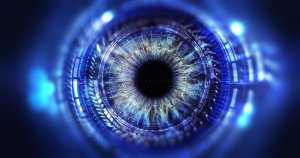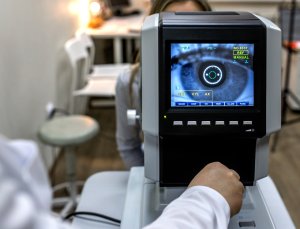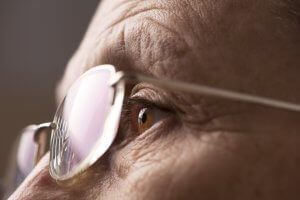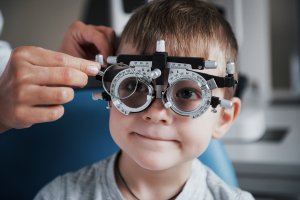Learn more about comprehensive eye care
What is comprehensive eye care? Conditions, treatment options and more!
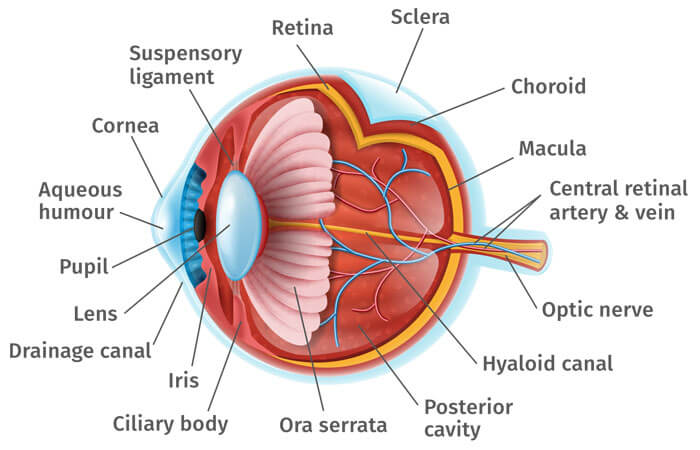
At a Glance
Things to know and remember:
- Getting a dilated eye exam is simple and painless — and it's the single best way to stay on top of your eye health
- Getting older increases your risk of some eye diseases.
- Other health conditions, like diabetes or high blood pressure, can also increase your risk of some eye diseases.
- Protecting your overall health can go a long way toward keeping your eyes healthy! It’s important to make healthy choices and take good care of yourself
- Every day, you can take simple steps to keep your eyes healthy: wear sunglasses, wear protective eyewear while at work, playing sports, doing construction work, or doing home repairs
- Give your eyes a rest. Looking at a computer for a long time can tire out your eyes. Rest your eyes by taking a break every 20 minutes to look at something about 20 feet away for 20 seconds.
About Aging Eyes
You may barely notice the changes at first. Maybe you’ve found yourself reaching more often for your glasses to see up close. You might have trouble adjusting to glaring lights or reading when the light is dim. You may even have put on blue socks thinking they were black. These are some of the normal changes to your eyes and vision as you age.
As more Americans head toward retirement and beyond, scientists expect the number of people with age-related eye problems to rise dramatically. You can’t prevent all age-related changes to your eyes. But you can take steps to protect your vision and reduce your risk for serious eye disease in the future. Effective treatments are now available for many disorders that may lead to blindness or visual impairment. You can also learn how to make the most of the vision you have.
“Vision impairment and blindness are among the top 5 causes of disability in older adults,” says Dr. Cynthia Owsley, an eye researcher at the University of Alabama at Birmingham. Vision changes can make it difficult to perform everyday activities, such as reading the mail, shopping, cooking, walking safely and driving. “Losing your vision may not be life-threatening, but it certainly affects your quality of life,” Owsley says.
Common age-related eye problems
These are several eye problems that are more common as people age, but they can affect anyone. There are some simple measures that people of any age can take to help ease their comfort and see better.
Presbyopia is the loss of ability to see close objects or small print. It is a normal process that happens slowly over a lifetime. You may not notice any change until after age 40. People with presbyopia often hold reading materials at arm’s length. Some people get headaches or "tired eyes" while reading or doing other close work. Presbyopia is often corrected with reading glasses.
Floaters are tiny spots or specks that float across the field of vision. Most people notice them in well-lit rooms or outdoors on a bright day. Floaters often are normal, but can sometimes be indications of eye problems such as retinal detachment, especially if they are accompanied by light flashes. If you notice a sudden change in the type or number of spots or flashes, see your eye doctor as soon as possible.
Blepharitis: Is a common inflammation of the eyelids which may be associated with itchy, irritated, red eyes and flakes on the lashes. Treatment is aimed at halting the inflammatory process, keeping the lids clean and eliminating the reservoir for bacteria. Early diagnosis and intervention can decrease the severity of its effects and improve the outcome of this frequently chronic disorder
Dry eyes happen when tear glands cannot make enough tears or produce poor quality tears. Dry eyes can be uncomfortable, causing itching, burning or even some loss of vision. Your eye doctor may suggest using a humidifier in your home or special eye drops that simulate real tears. Surgery may be needed in more serious cases of dry eyes.
Tearing, or having too many tears, can come from being sensitive to light, wind, or temperature changes. Protecting your eyes by shielding them or wearing sunglasses can sometimes solve the problem. Tearing may also mean that you have a more serious problem, such as an eye infection or a blocked tear duct. In addition, people with dry eyes may tear excessively because dry eyes are easily irritated. Your eye doctor can treat or correct both of these conditions.
Common Eye Problems and Concerns
Preventing eye problems
While eye problems and eye diseases become more prevalent with age, many can be prevented or corrected if you:
See your family physician regularly to check for diseases that could cause eye problems, like diabetes.
Visit your ophthalmologist every one-to-two years. Having a complete eye exam with an eye specialist is important because most eye diseases can be treated when found in an early stage. The eye doctor will dilate or enlarge your pupils by putting drops in your eyes. This is the only way to find some eye diseases that have no early signs or symptoms. You should also have a screening for glaucoma. The doctor will then test your eyesight, your glasses, and your eye muscles.
Have an eye exam with pupil dilation, at least once every year, if you have diabetes or a family history of eye disease. See an eye doctor immediately if you have any loss of eyesight, blurred vision, eye pain, double vision, redness, swelling of your eye or eyelid, or fluids coming from the eye.
Detailed information about the following eye conditions is a click away:
Does my insurance plan
cover my eye care?
Find out what insurance we accept and what is covered by insurance.
Learn more about our comprehensive eye care specialists
Physician information including education, training, practice location and more.
Schedule an Appointment
Schedule an appointment with one of our specialists.
